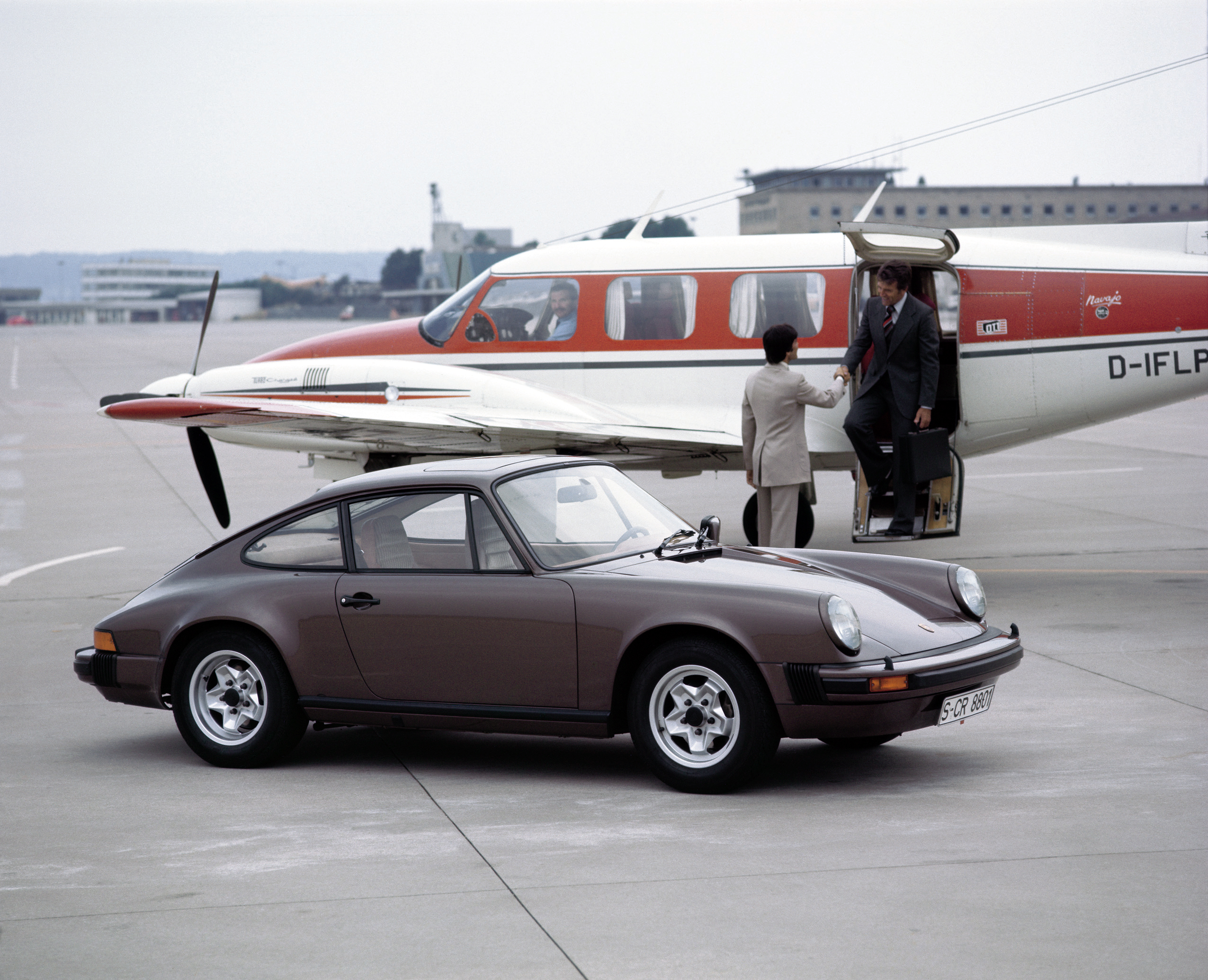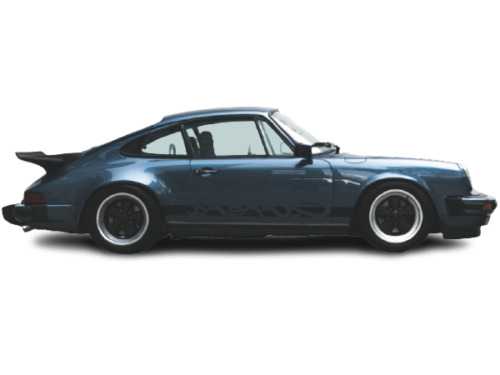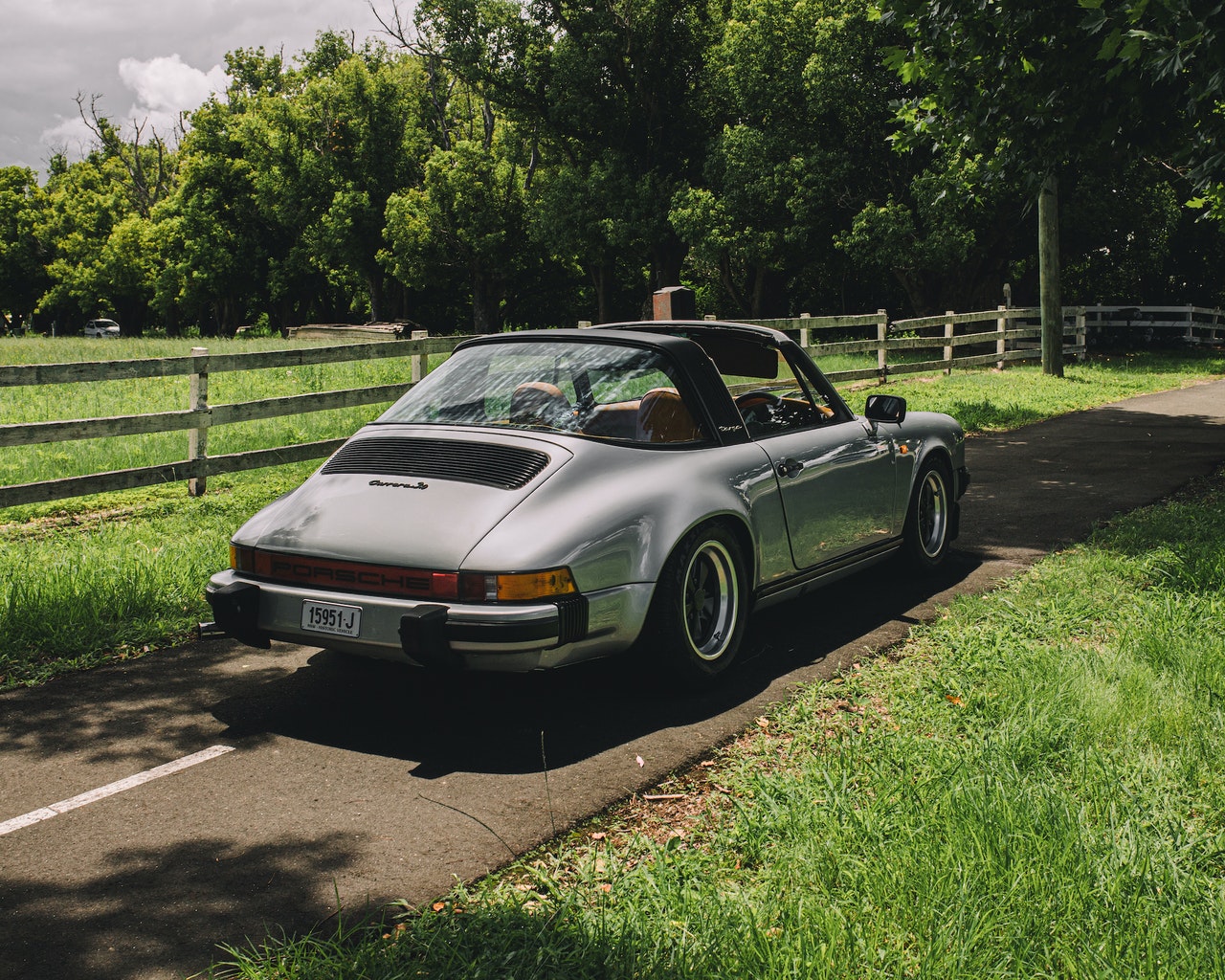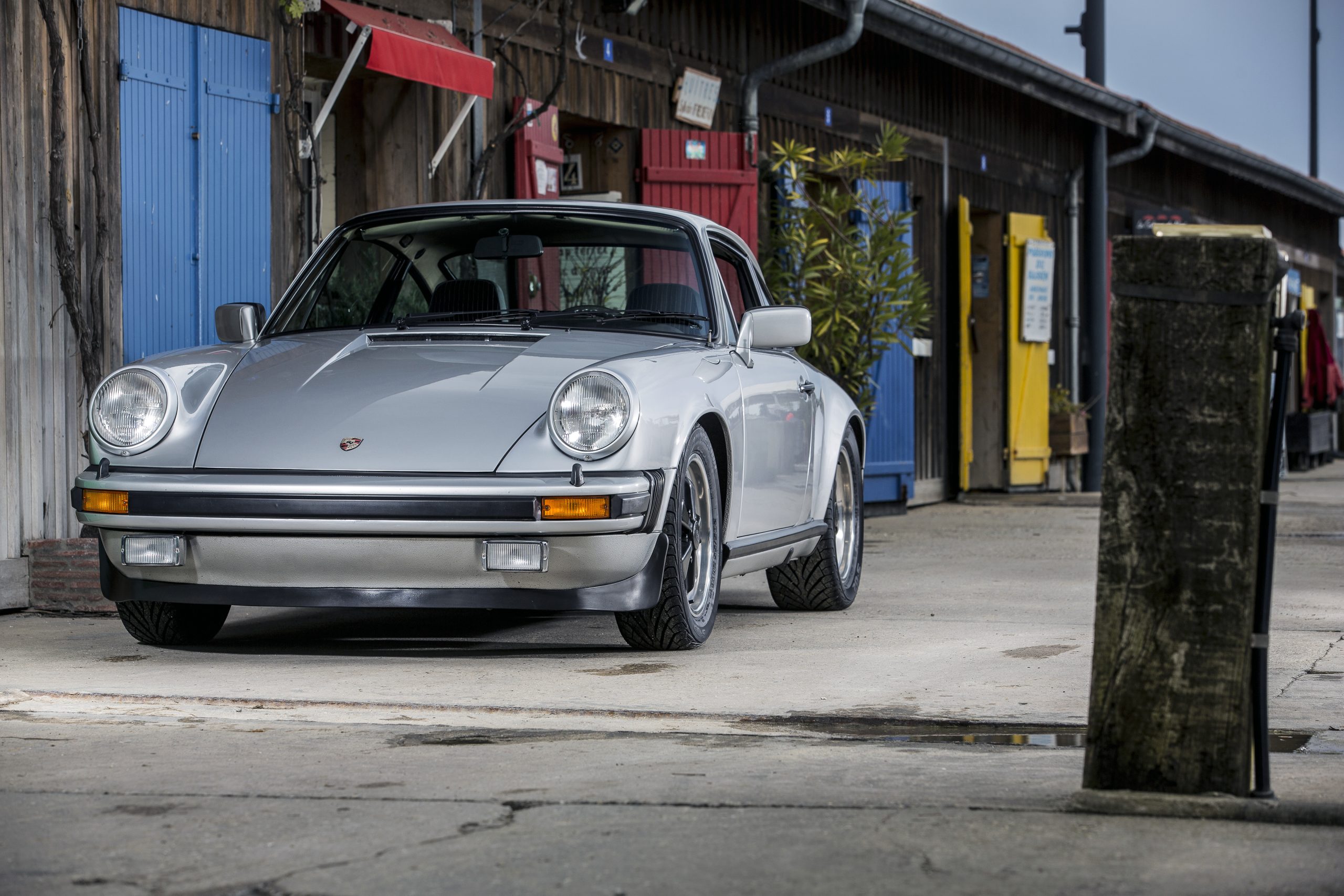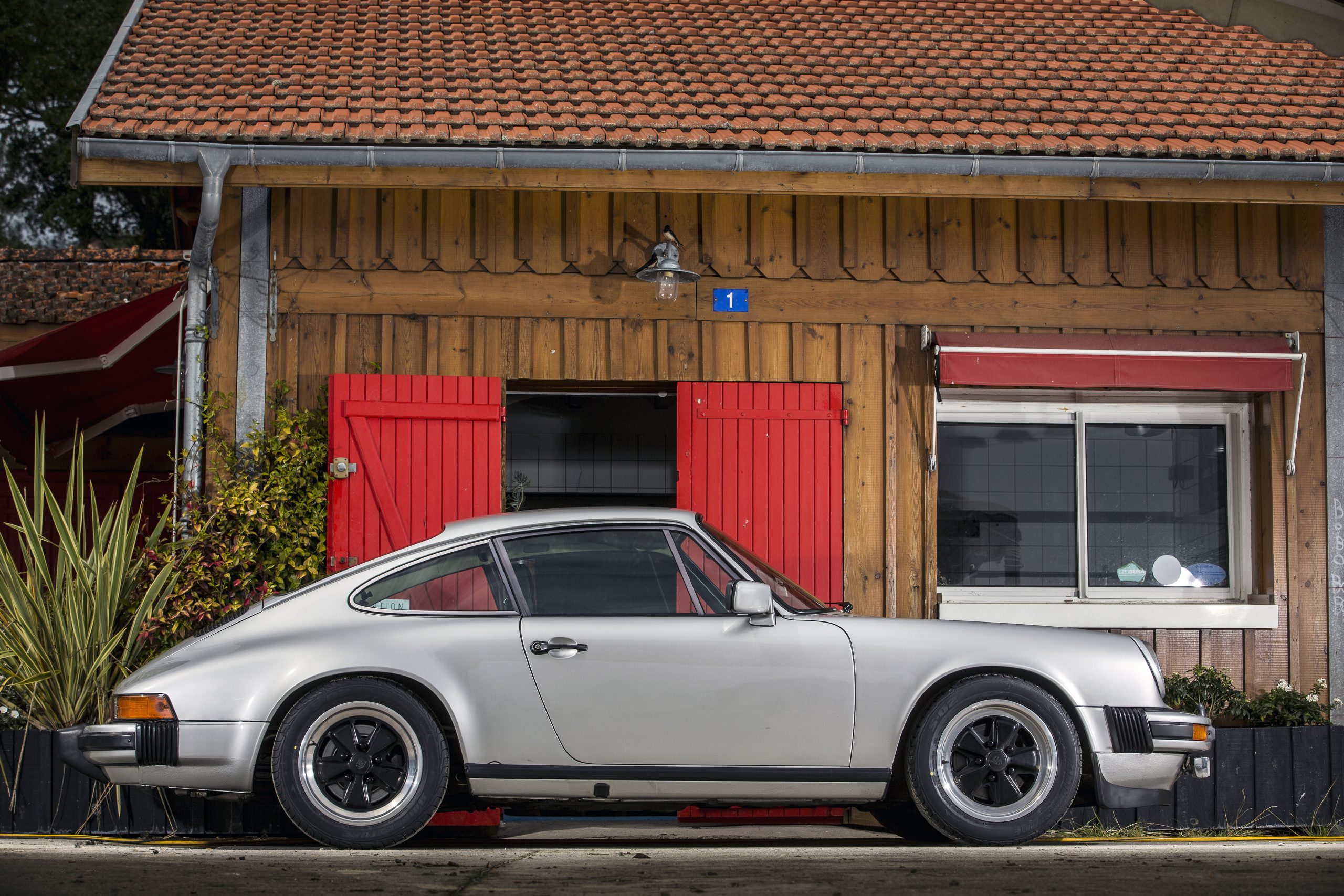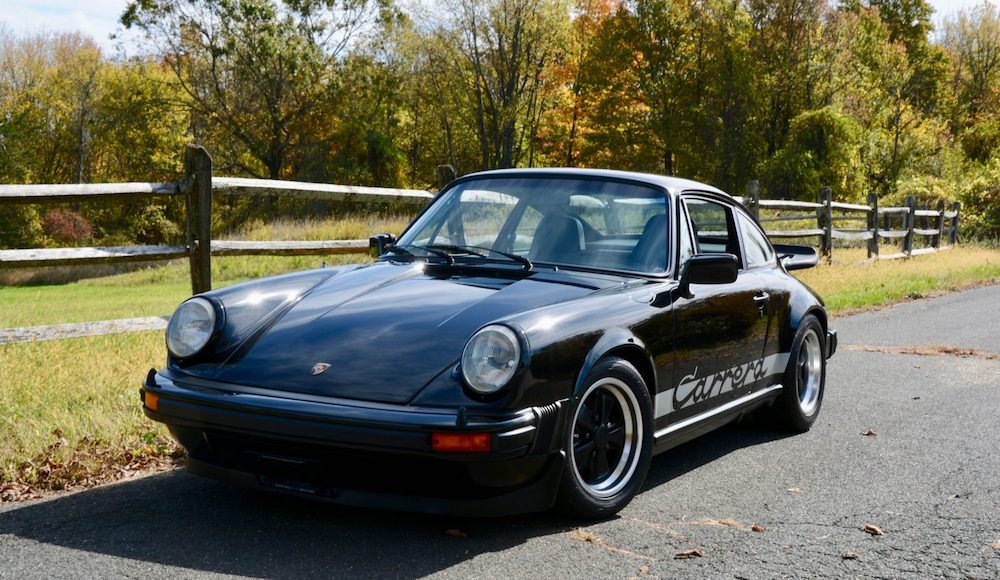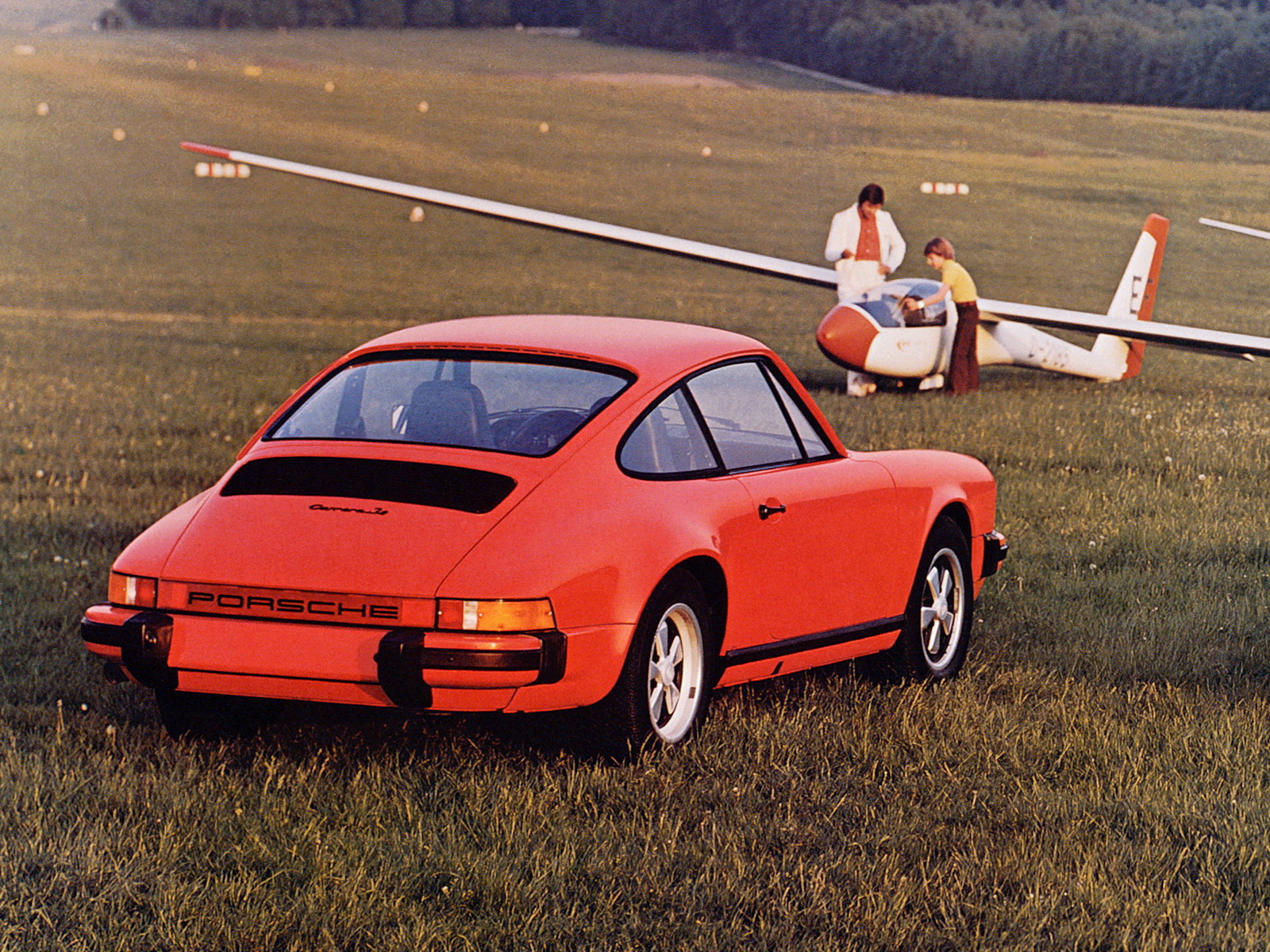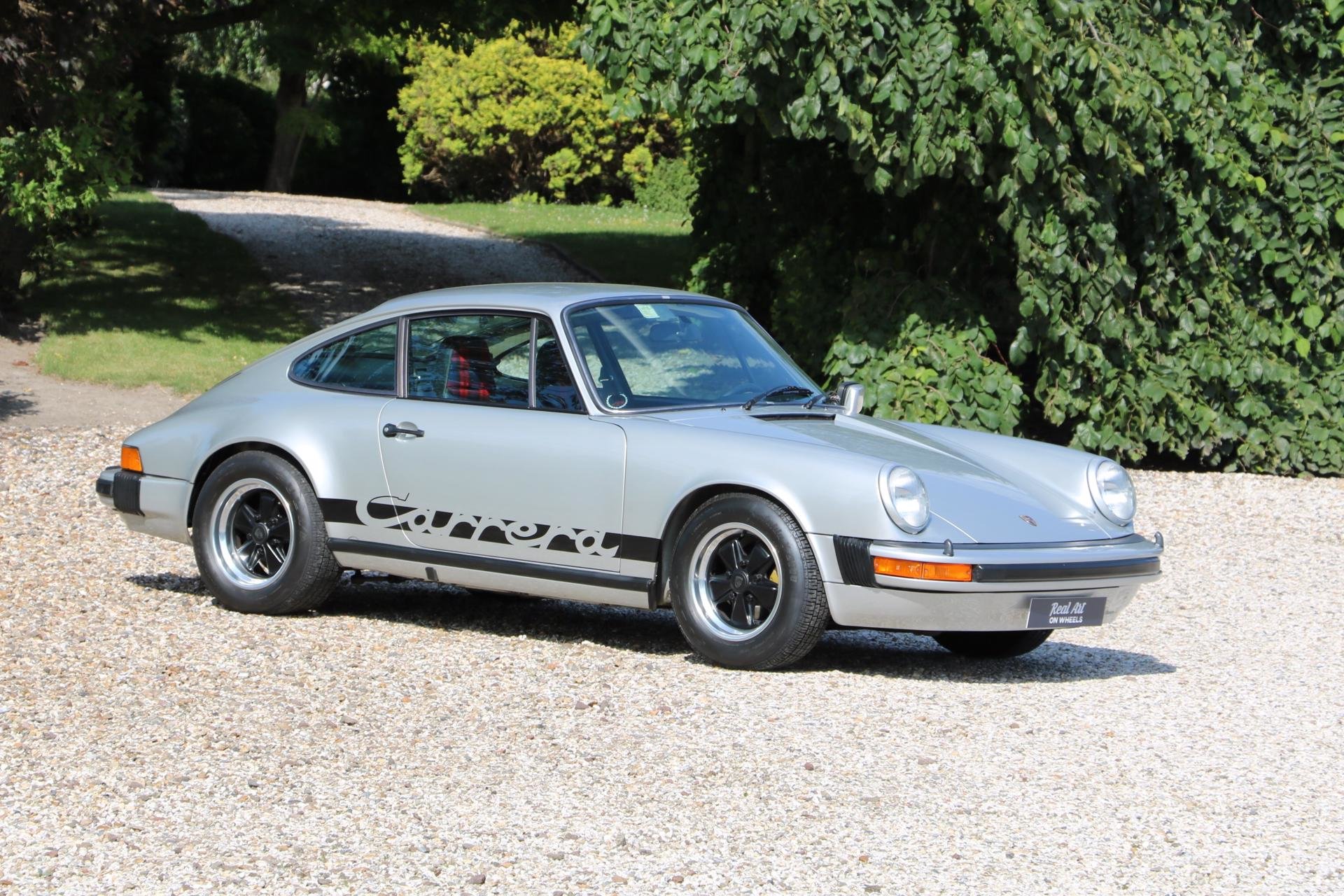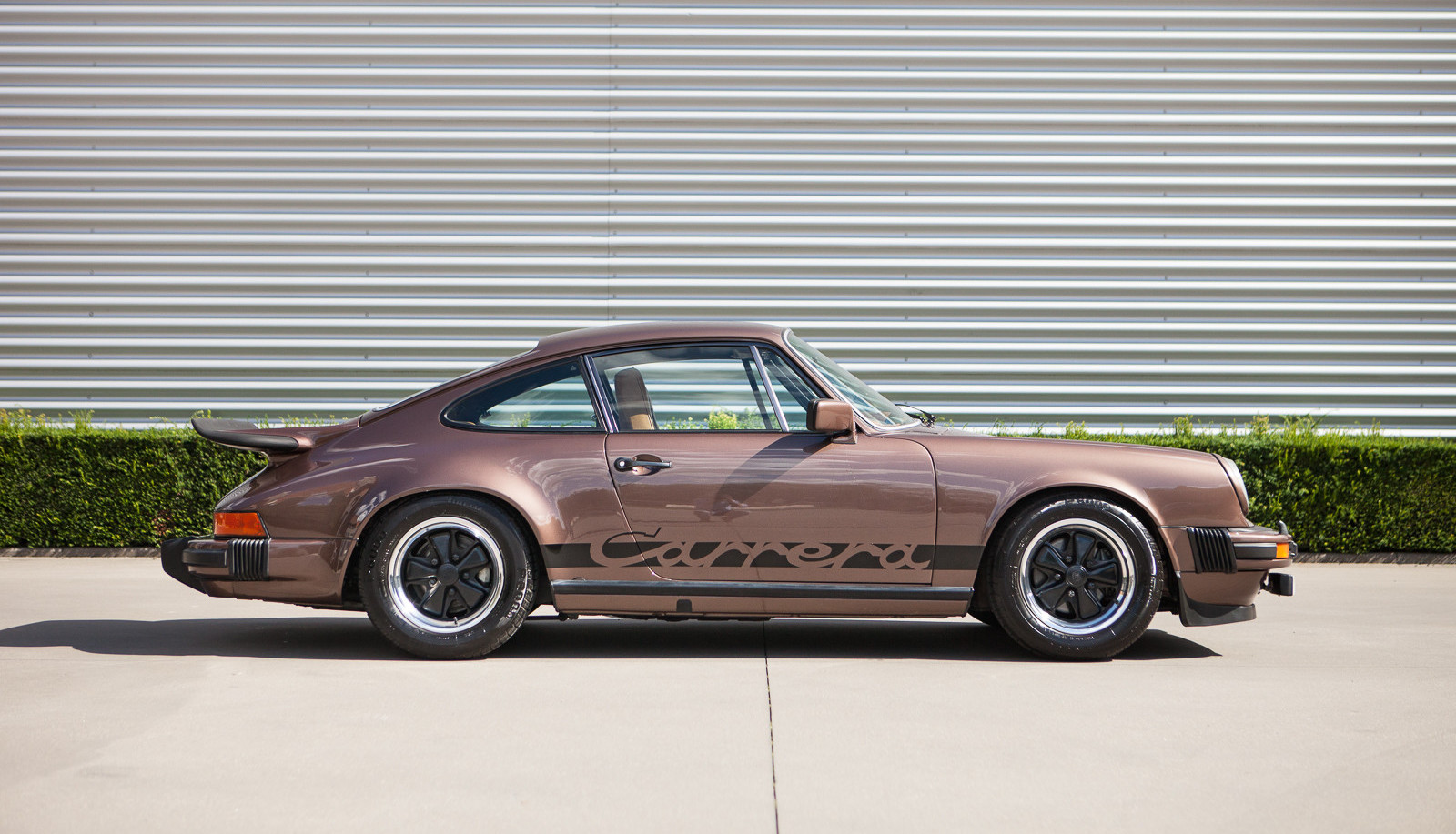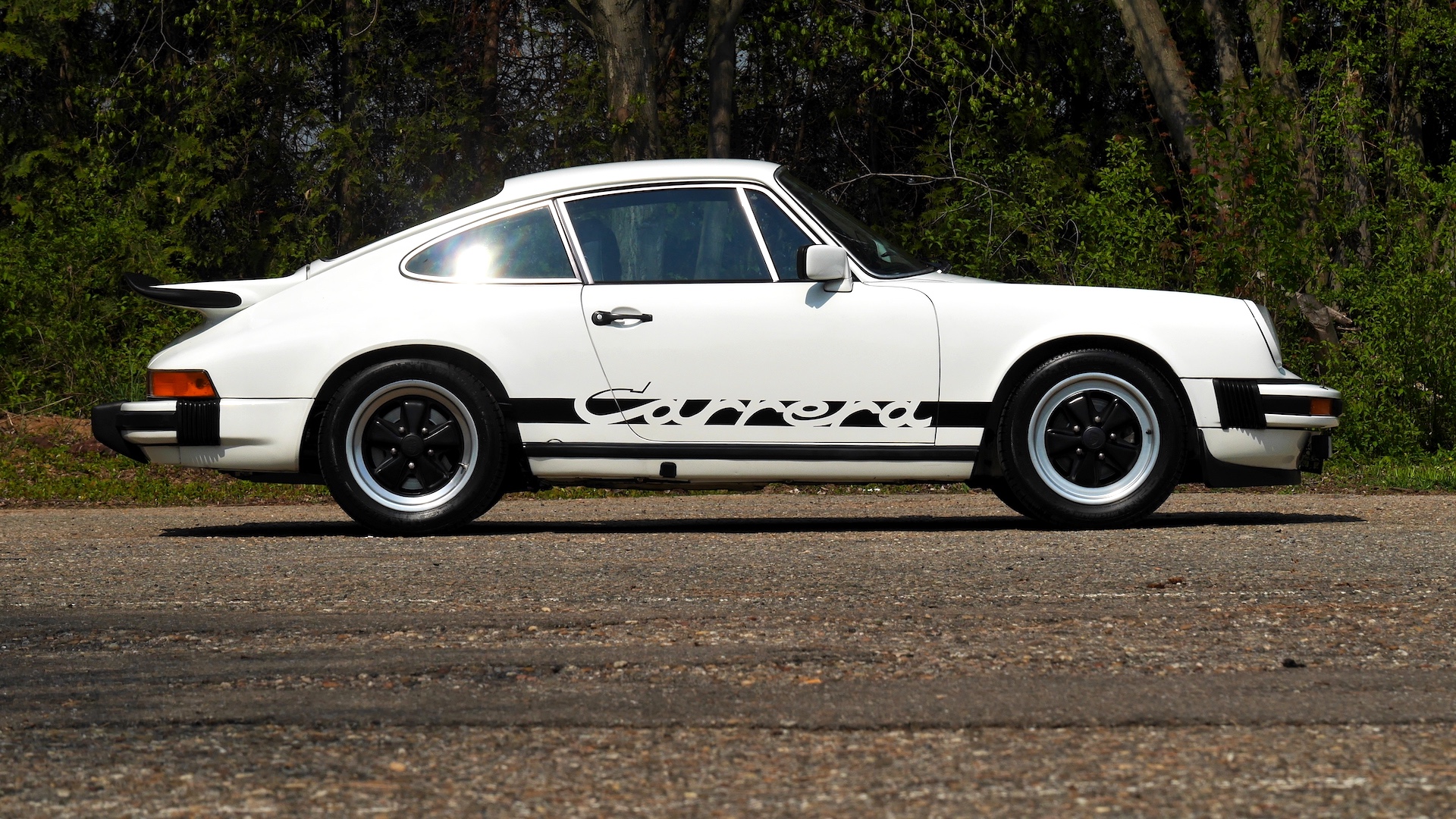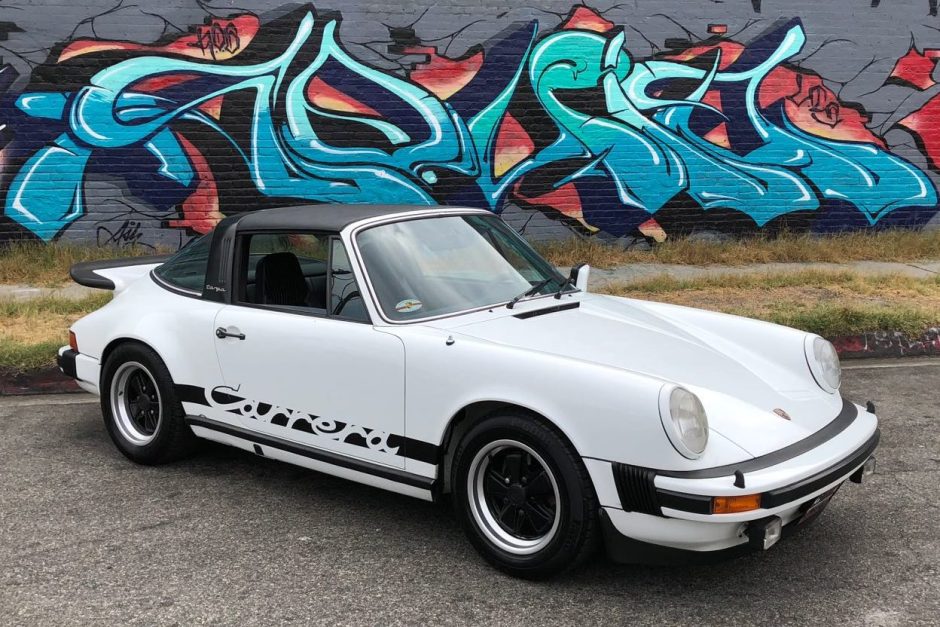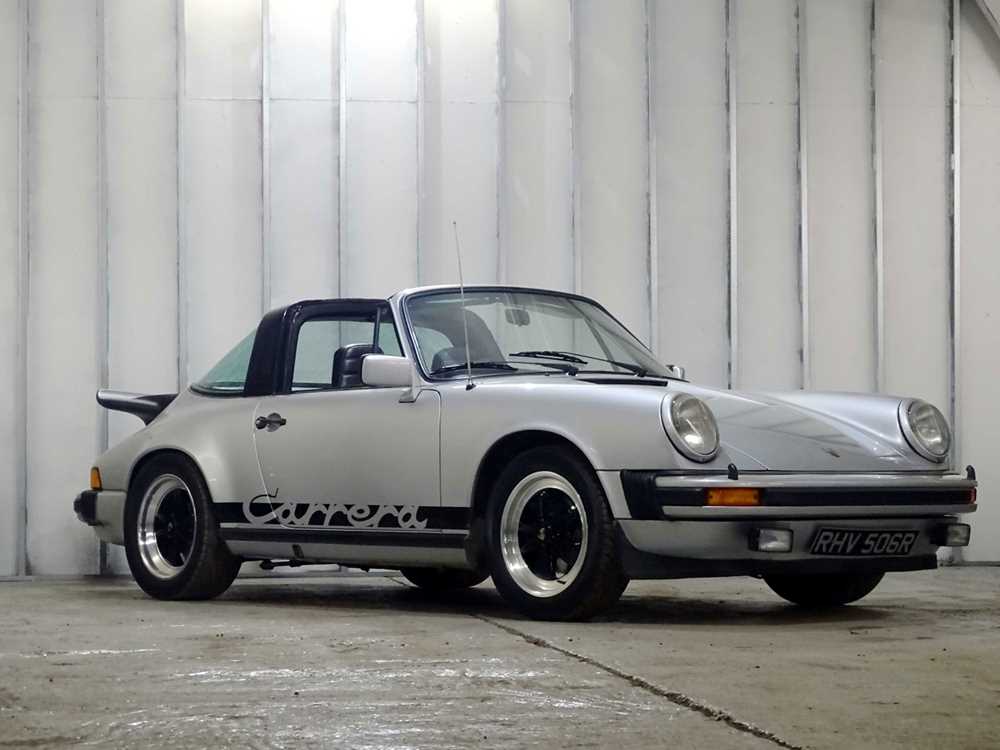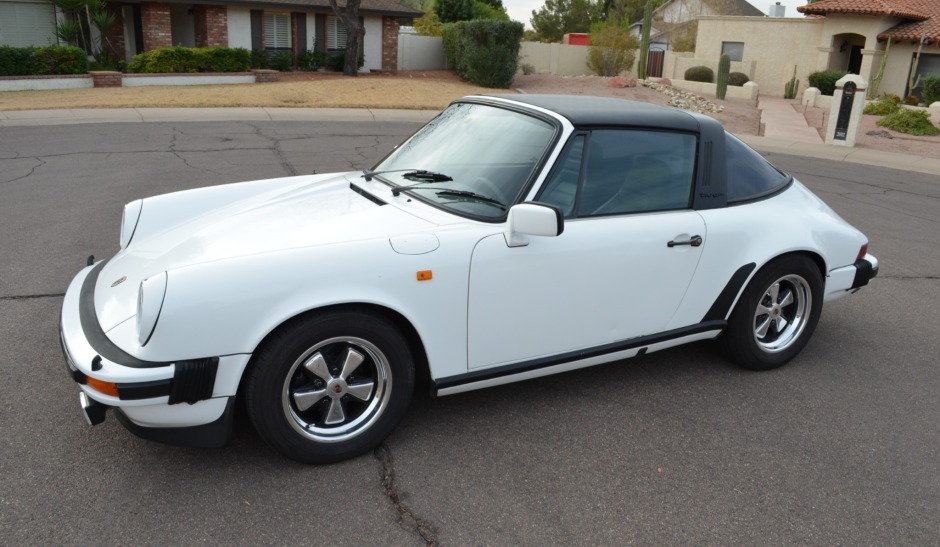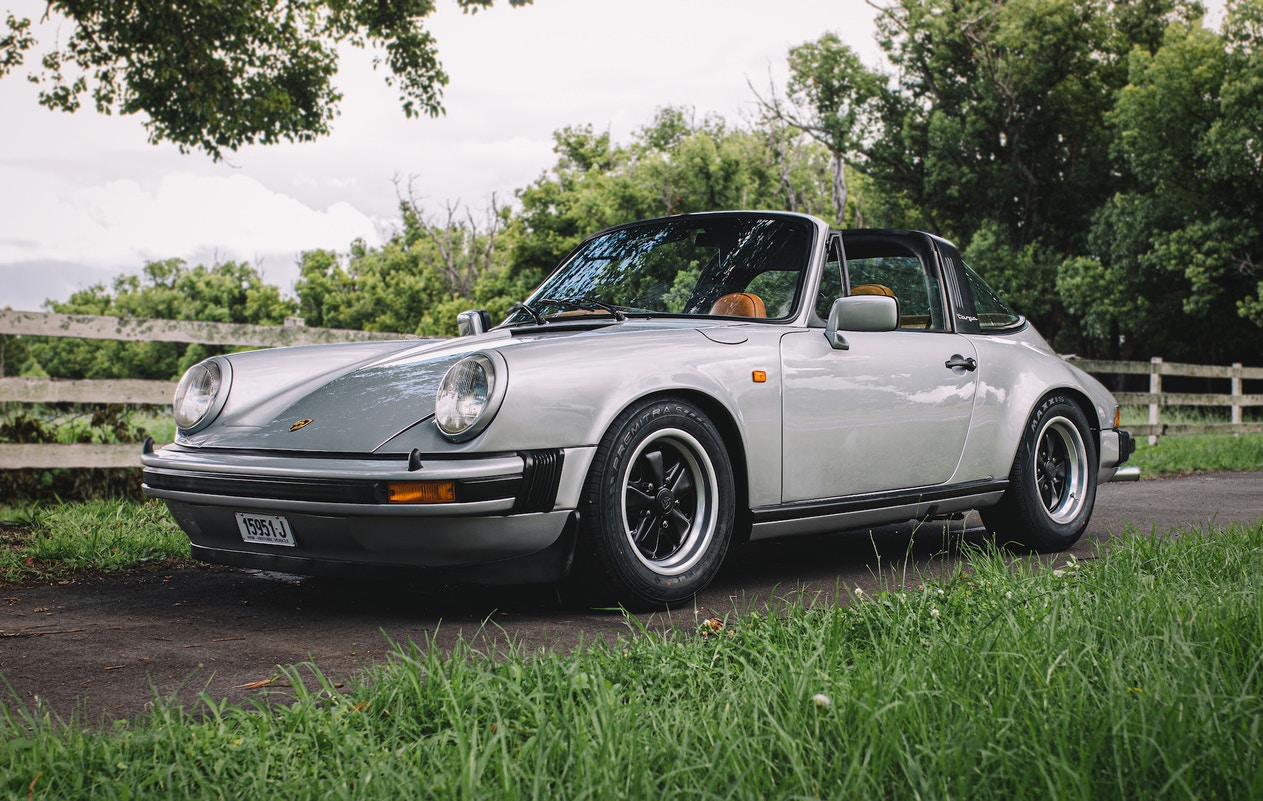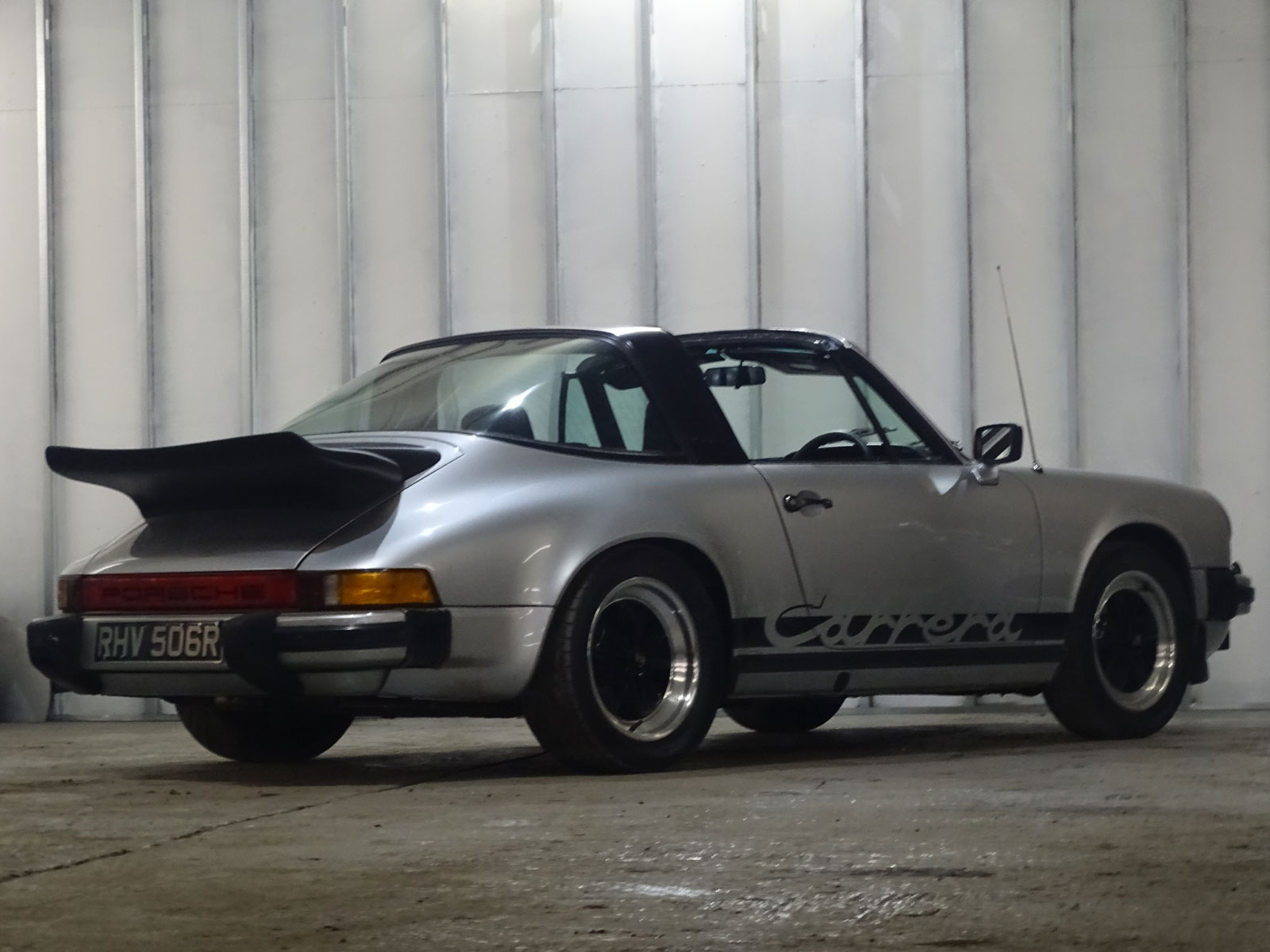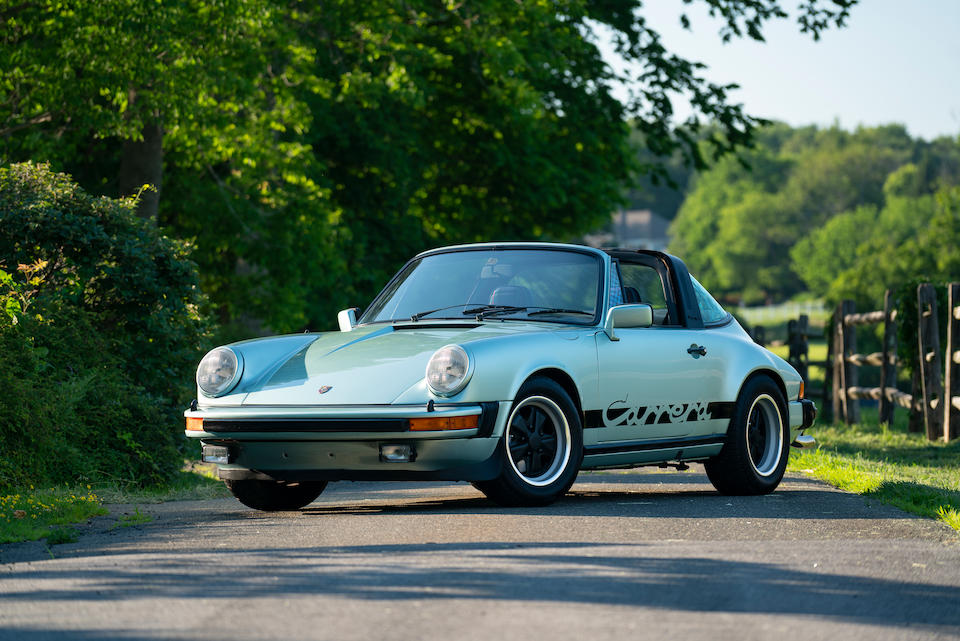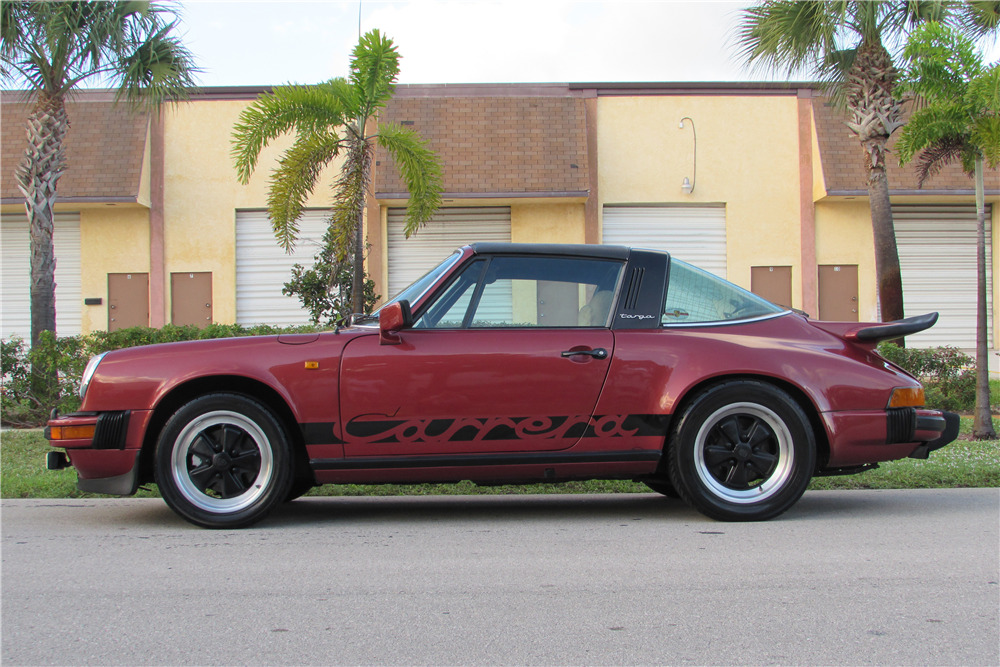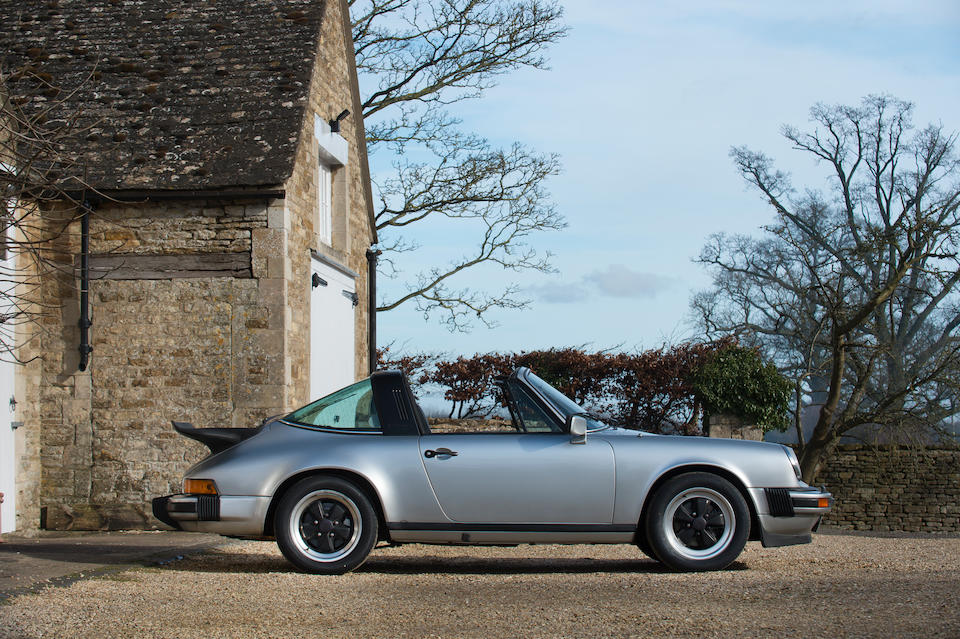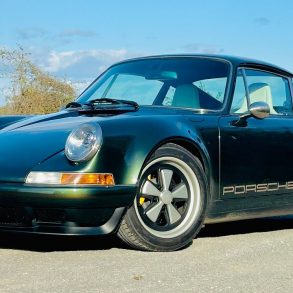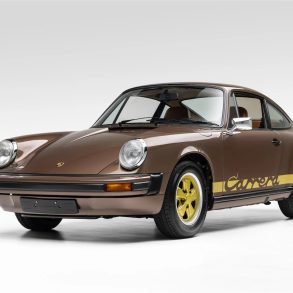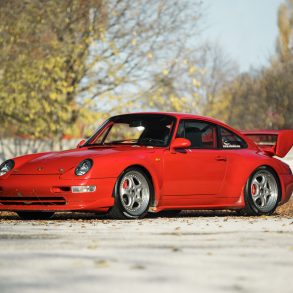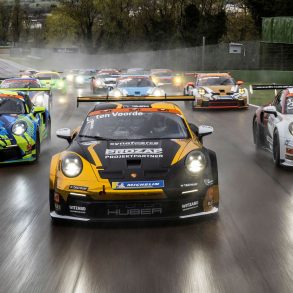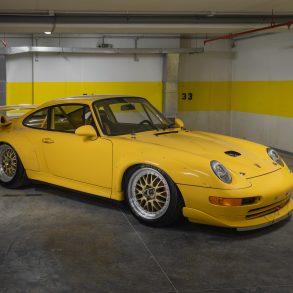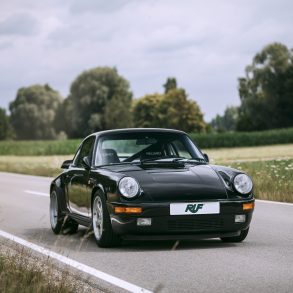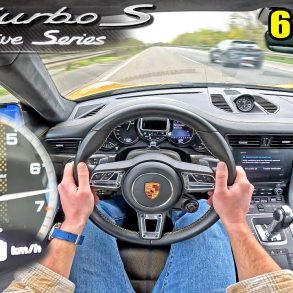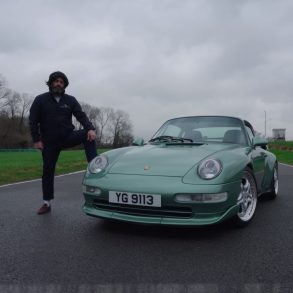1976-1977 Porsche 911 Carrera 3.0 – Ultimate Guide
The Porsche 911 ‘Carrera 3’ has a very special place in the history of the Porsche 911, as it brought together elements from two of Porsche’s most legendary cars. It represented the latest incarnation of the Porsche Carrera, originally introduced to the 911 series as the classic 2.7 litre RS in late 1972, and the Carrera 3′s 2993cc engine used the same die-cast aluminium crank-case as its awesome cousin, the newly introduced Porsche 930 or ’911 Turbo’. It was sold between 1976-1977 – built between two other models in the 911 line up: the standard 911 and the 911/930 Turbo. During its short two year life span, only 3687 cars were built. Of these 2564 were coupes and only 1123 produced as Targas.
1976 was an important year for Porsche as the factory began to evolve the 911 with expanded offerings featuring a coupe and targa version utilizing 2.7L CIS engines, the last few of the Carrera 2.7 MFI coupes, a brand new 3.0 Turbo with wider body and whaletail, and a top-of-the-line normally aspirated 911 making use of the the new Turbo 3 liter case….the Carrera 3.0. It was the first year that Porsche began dipping complete bodies in a liquid zinc bath for better protection from rust, a very advanced innovation in the auto industry at the time.
The factory offered the 3.0 with stronger aluminum cased engines utilizing Bosch’s CIS to meet emission and sound requirements with 200 hp to replace the emission challenged Carrera 2.7 MFI cars, and of course they had to perform better (or at least as good) as their predecessor (210 hp).
The Carrera 3.0 engine was essentially the phenomenal 911 Turbo’s 2994 cc engine minus the turbocharger. Built before the ‘911 SC’ it has everything the SC has, and more. It’s a different drive with more power at 200bhp; more torque, now at 188 ft/lb @4200rpm and it was 10% lighter too. It has the 6 bolt flywheel and a crank from the legendary 73 Carrera RS. The 3.0 Carrera would go on to be the basis for all future developed 911’s up to 1989 including the 911SC and 3.2 Carrera.
….. that the Carrera 3.0, despite a reputation for being a ‘tamed-down’ version of the original 2.7RS and 2.7 Carreras, had almost identical 0-60 and 0-100mph performance figures but was endowed with so much extra torque that it could pull from 25 to 100mph in top gear over 3 seconds faster than either of its production predecessors
The Carrera 3.0 was first introduced in August 1975 for the 1976 Porsche model year and was available for two years until July 1977. During these two years only 3687 of the cars were produced for the ‘I’ and ‘J’ Series 911 production runs (2564 Coupes and 1123 Targas). Despite the limited numbers, though, the Carrera’s normally aspirated version of the Turbo’s power unit proved to be a powerful, strong and extremely reliable engine, and the overall design of the car was to form the bedrock for the remaining years of the 911 series’ development (through the 3.0 litre 911 SC and 3.2 litre Carrera) until the introduction of the 964 model in 1989.
The Carrera 3 enjoyed marvellously quick and responsive steering, whilst the handling was taut and, for its day, sensational. The car was also incredibly safe, the front and rear anti-roll bars reducing body roll and improving stability, and the 282mm front and 290mm rear disc brakes managing to stop the car in record times for the mid-1970s.
Porsche also made ‘comfort’ and ‘sports’ packs available for the Carrera 3.0 with the final J-Series cars being offered in one of two factory specifications: the classic, spoiler-less version with Koni dampers and 6 inch front and 7 inch rear wheels; and the Carrera 3 Sport with Bilstein shock absorbers, bigger wheels sporting Pirelli P7 tyres, special seats, front lip spoiler and a rear rubber ‘whale-tail’ spoiler.
The basically unmodified Type 911 body was changed only in details but, as already mentioned, incorporated high-temperature zinc-coated sheet steel. In addition to this, the use of rust-resistant aluminium components was extended. They now included the bumpers, the wheels, the rear semi-trailing arms, the front suspension cross member, the engine crankcase, cylinders and pistons. the gearbox housing and the steering gear housing. The stainless steel Targa roll-over structure was also fully corrosion resistant. Modifications to the running gear were very few. As in the other 911 models, the front suspension struts of the Carrera were slightly more inclined inwards to facilitate camber adjustment. The front brakes got new cast iron calipers, providing a friction area identical with that of the light alloy calipers. The front suspension torsion bars had a diameter of 19 mm (0.75 inch) while the anti-roll bar was 20 mm (0.79 inch) thick. The rear torsion bars were 23 mm (0.9 inch) in diameter and the anti-roll bar was of 18 mm (0.7 inch) diameter. The rear wings (fenders) were wider than those of the 911 in order to accommodate the 215/60 VR 15 high speed tyres.
Paul Frere discussing tests of the C3.0 vs. the C2.7 says: ” the loss of 10 hp in the I series Carrera 3.0 engine compared with its 2.7 litre predecessor is of very little consequence… all standing start acceleration figures practically identical… Flexibility, however, which was already excellent with the 2.7 litre Carrera, shows a quite dramatic improvement, 25-50 mph time in 5th gear dropping from 14.1 to 9.4 seconds, the 50-75 mph time from 12.1 to 10.4 seconds, and the 75-99.5 mph time from 12.4 to 10.7 seconds.
The capacity increase to 2,993 cc was obtained by increasing the cylinder bore from 90 to 95 mm (3.5 to 3.75 inches). The cast aluminium pistons were obviously new too but the cylinder material was still Nikasil. The compression ratio of 8.5:1 allowed the use of regular grade fuel. The Carrera was fitted with the camshaft housing of the Porsche Turbo, and the camshaft itself was also new. The intake valves were now of 49 mm (1.9 inches) diameter: the exhaust valves were similar to those of the Turbo engine, but were not sodium filled. Engine lubrication was improved by a larger capacity oil pressure pump. The engine cooling blower had only five blades as mentioned. The fuel tank and pump were modified as in the 911-2.7 and the Bosch six-plunger injection pump was replaced by the Bosch K-Jetronic continuous flow injection system, basically similar to the 911-2.7 installation, but of different dimensions.
The Carrera 3.0 was equipped with the Type 915/49 four-speed gearbox. A five-speed version and the three-speed Sportomatic were optional. A stronger clutch release cable was used and the cable guiding nipple was screwed to the gearbox housing. In Sportomatic cars, the clutch release governor valve was modified to suit the different intake vacuum resulting from the change from mechanical to K-Jetronic injection. Both the clutch servo and the torque converter housing were modified to suit the higher engine torque.
The Carrera 3.0 was pretty well stacked when it came to standard equipment. A leather-covered steering wheel, leather-covered seats and interior trim were standard, but cloth and imitation leather were also available. The floor was covered with thick carpets, the door trim panels and the rear cockpit panel were beaded, the rigid door pockets were lined with cloth. The automatic heater control, the electrically adjustable and heated external mirror, the headlight washers and the electric window switches were all pretty awesome back in 1976.
The Carrera 3.0 was a more grown up 911 and yet still continued the tradition of one of the most famous Porsches in the history of motor sport. The 3-litre model provided a very high performance and magnificent handling and safety in a more relaxed way, with less noise and better comfort, than all its predecessors. The character of the car was driven by that increase in capacity increase from 2.7 to 3 litres, which improved the engine’s flexibility and mid-range performance, the maximum torque of 188 ft lbs now being developed at 4,200 rpm instead of 5,100 rpm.
Sport Auto Magazine, January 1976 – In short: A turbo is more a sports car for level-headed people whilst the Carrera attracts more dynamic characters. It would be ideal however, when your garage housed both a turbo and a Carrera: one for the motorways and one for the A-roads.
Throughout its short production life, the Carrera 3 sat in the middle of the 911 range, between the standard 911 and the Turbo. However, for the 1978 model year, Porsche decided to rationalize the normally-aspirated 911 range into a single car, abandoning the Carrera designation, and renaming the new model the 911 SC. It would be a further six years before the Carrera name reappeared (on a 911 at least) with the introduction of the 3.2 Carrera for the 1984 model year.
The Carrera 3.0 was not available in the US, and the factory produced only 1093 coupes and 479 targas in 76, and in 77 built 1473 coupes and 646 targas.
Videos & Reviews
Pictures


